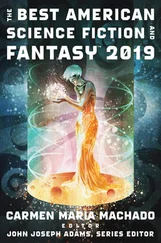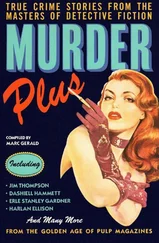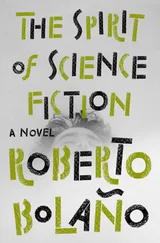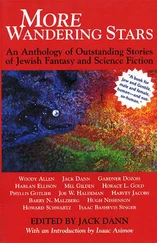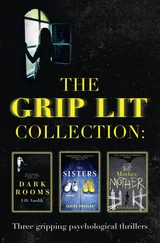For the male spider, mating is a dangerous process. This is especially true in the spider species that weave intricate orb-shaped webs, the kind that catch the morning dew and sparkle so nicely for nature photographers. In these species, the female is larger than the male. She is, I must confess, rather a bitch; she’ll attack anything that touches her web.
At mating time, the male proceeds cautiously. He lingers at the edge of the web, gently tugging on a thread of spider silk to get her attention. He plucks in a very specific rhythm, signaling to his would-be lover, whispering softly with his tugs: “I love you. I love you.”
After a time, he believes that she has received his message. He feels confident that he has been understood. Still proceeding with caution, he attaches a mating line to the female’s web. He plucks the mating line to encourage the female to move onto it. “Only you, baby,” he signals. “You are the only one.”
She climbs onto the mating line—fierce and passionate, but temporarily soothed by his promises. In that moment, he rushes to her, delivers his sperm, then quickly, before she can change her mind, takes a hike. A dangerous business, making love.
Before the world went away, I was a cautious person. I took great care in my choice of friends. I fled at the first sign of a misunderstanding. At the time, it seemed the right course.
I was a smart woman, a dangerous mate. (Odd—I find myself writing and thinking of myself in the past tense. So close to death that I consider myself already dead.) Men would approach with caution, delicately signaling from a distance: “I’m interested. Are you?” I didn’t respond. I didn’t really know how.
An only child, I was always wary of others. My mother and I lived together. When I was just a child, my father had left to pick up a pack of cigarettes and never returned. My mother, protective and cautious by nature, warned me that men could not be trusted. People could not be trusted. She could trust me and I could trust her, and that was all.
When I was in college, my mother died of cancer. She had known of the tumor for more than a year; she had endured surgery and chemotherapy, while writing me cheery letters about her gardening. Her minister told me that my mother was a saint—she hadn’t told me because she hadn’t wanted to disturb my studies. I realized then that she had been wrong. I couldn’t really trust her after all.
I think perhaps I missed some narrow window of opportunity. If, at some point along the way, I had had a friend or a lover who had made the effort to coax me from hiding, I could have been a different person. But it never happened. In high school, I sought the safety of my books. In college, I studied alone on Friday nights. By the time I reached graduate school, I was, like the pseudoscorpion, accustomed to a solitary life.
I work alone in the laboratory, building the female. She is larger than the male. Her teeth are longer and more numerous. I am welding the hip joints into place when my mother comes to visit me in the laboratory.
“Katie,” she says, “why didn’t you ever fall in love? Why didn’t you ever have children?”
I keep on welding, despite the trembling of my hands. I know she isn’t there. Delirium is one symptom of radiation poisoning. But she keeps watching me as I work.
“You’re not really here,” I tell her, and realize immediately that talking to her is a mistake. I have acknowledged her presence and given her more power.
“Answer my questions, Katie,” she says. “Why didn’t you?”
I do not answer. I am busy and it will take too long to tell her about betrayal, to explain the confusion of a solitary insect confronted with a social situation, to describe the balance between fear and love. I ignore her just as I ignore the trembling of my hands and the pain in my belly, and I keep on working. Eventually, she goes away.
I use the rest of the soda cans to give the female brightly colored scales: Coca-Cola red, Sprite green, Fanta orange. From soda cans, I make an oviduct, lined with metal. It is just large enough to accommodate the male’s cock.
The male bowerbird attracts a mate by constructing a sort of art piece. From sticks and grasses, he builds two close-set parallel walls that join together to make an arch. He decorates this structure and the area around it with gaudy trinkets: bits of bone, green leaves, flowers, bright stones, and feathers cast off by gaudier birds. In areas where people have left their trash, he uses bottle caps and coins and fragments of broken glass.
He sits in his bower and sings, proclaiming his love for any and all females in the vicinity. At last, a female admires his bower, accepts his invitation, and they mate.
The bowerbird uses discrimination in decorating his bower. He chooses his trinkets with care—selecting a bit of glass for its glitter, a shiny leaf for its natural elegance, a cobalt-blue feather for a touch of color. What does he think about as he builds and decorates? What passes through his mind as he sits and sings, advertising his availability to the world?
I have released the male and I am working on the female when I hear rattling and crashing outside the building. Something is happening in the alley between the laboratory and the nearby office building. I go down to investigate. From the mouth of the alley, I peer inside, and the male creature runs at me, startling me so that I step back. He shakes his head and rattles his teeth threateningly.
I retreat to the far side of the street and watch him from there. He ventures from the alley, scuttling along the street, then pauses by a BMW that is parked at the curb. I hear his claws rattling against metal. A hubcap clangs as it hits the pavement. The creature carries the shiny piece of metal to the mouth of the alley and then returns for the other three, removing them one by one. When I move, he rushes toward the alley, blocking any attempt to invade his territory. When I stand still, he returns to his work, collecting the hubcaps, carrying them to the alley, and arranging them so that they catch the light of the sun.
As I watch, he scavenges in the gutter and collects things he finds appealing: a beer bottle, some colorful plastic wrappers from candy bars, a length of bright yellow plastic rope. He takes each find and disappears into the alley with it.
I wait, watching. When he has exhausted the gutter near the mouth of the alley, he ventures around the corner and I make my move, running to the alley entrance and looking inside. The alley floor is covered with colored bits of paper and plastic; I can see wrappers from candy bars and paper bags from Burger King and McDonald’s. The yellow plastic rope is tied to a pipe running up one wall and a protruding hook on the other. Dangling from it, like clean clothes on the clothesline, are colorful pieces of fabric: a burgundy-colored bath towel, a paisley print bedspread, a blue satin bedsheet.
I see all this in a glance. Before I can examine the bower further, I hear the rattle of claws on pavement. The creature is running at me, furious at my intrusion. I turn and flee into the laboratory, slamming the door behind me. But once I am away from the alley, the creature does not pursue me.
From the second-story window, I watch him return to the alley and I suspect that he is checking to see if I have tampered with anything. After a time, he reappears in the alley mouth and crouches there, the sunlight glittering on his metal carapace.
In the laboratory, I build the future. Oh, maybe not, but there’s no one here to contradict me, so I will say that it is so. I complete the female and release her.
The sickness takes over then. While I still have the strength, I drag a cot from a back room and position it by the window, where I can look out and watch my creations.
Читать дальше






